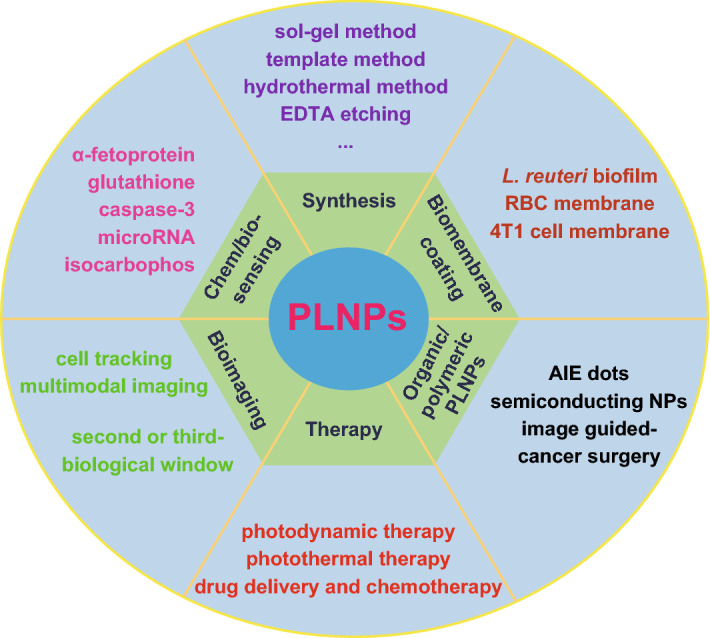- Record: found
- Abstract: found
- Article: found
Recent Advances of Persistent Luminescence Nanoparticles in Bioapplications

Read this article at
Highlights
-
Comprehensive summary on properties, persistent luminescence mechanism and synthesis of persistent luminescence nanoparticles.
-
Unique properties and advantages of persistent luminescence nanoparticles for chem/biosensing, bioimaging and imaging-guided therapy.
-
New organic and polymeric persistent luminescence nanoparticles with long afterglow lifetime for in vivo optical imaging.
Abstract
Persistent luminescence phosphors are a novel group of promising luminescent materials with afterglow properties after the stoppage of excitation. In the past decade, persistent luminescence nanoparticles (PLNPs) with intriguing optical properties have attracted a wide range of attention in various areas. Especially in recent years, the development and applications in biomedical fields have been widely explored. Owing to the efficient elimination of the autofluorescence interferences from biotissues and the ultra-long near-infrared afterglow emission, many researches have focused on the manipulation of PLNPs in biosensing, cell tracking, bioimaging and cancer therapy. These achievements stimulated the growing interest in designing new types of PLNPs with desired superior characteristics and multiple functions. In this review, we summarize the works on synthesis methods, bioapplications, biomembrane modification and biosafety of PLNPs and highlight the recent advances in biosensing, imaging and imaging-guided therapy. We further discuss the new types of PLNPs as a newly emerged class of functional biomaterials for multiple applications. Finally, the remaining problems and challenges are discussed with suggestions and prospects for potential future directions in the biomedical applications.

Related collections
Most cited references162
- Record: found
- Abstract: found
- Article: not found
Systemic Immunity Is Required for Effective Cancer Immunotherapy.
- Record: found
- Abstract: not found
- Article: not found
A New Long Phosphorescent Phosphor with High Brightness, SrAl[sub 2]O[sub 4]:Eu[sup 2+],Dy[sup 3+]
- Record: found
- Abstract: found
- Article: not found